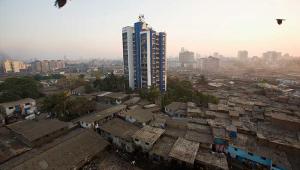The report added that an average of 200,000 people die every year as a result of inadequate access to safe water.
India’s sustainable water development has been slow in recent years and is “only going to get worse”, the report by government think-tank Niti Aayog stated.
This comes as bad management and non-existent pricing of water has kept the country from improving its water supply, despite the fact that 80% of the country’s states have water conservation legislation in place.
Poor irrigation techniques and contamination of groundwater has pushed India in to the crisis, the report, which looked at data from 24 out of India’s 29 states, added.
The water crisis also threatens food security, as the country is highly reliant on agriculture and 80% of its water is used for irrigation.
According to the report, three quarters of the population is affected by contaminated water and 20% of the country’s disease is believed to be a direct result of this.
This comes as the Indian finance minister unveiled what he called the “world’s largest healthcare programme” in a move towards universal healthcare in February’s budget, which included free cooking gas and a health plan for the poor.
Kalipso Chalkidou, director of global health policy at the Center for Global Development, told PF International: “Water, sanitation and hygiene at healthcare centres and at domestic settings are conditions for improving population health and achieving the vision of universal healthcare coverage.
“For India's recently launched National Health Protection Scheme, one of largest coverage schemes in the world targeting 500 million people, to succeed, the challenges of bad water quality and water scarcity must be dealt with as top priorities.”
The South Asian country also does not have an adequate number of sewage treatment plants, so urban wastewater is often added to water flowing downstream, which is the water used for drinking in rural areas, the report said.
Many end up relying on private water suppliers or tankers paid for by the government.
It estimates that 21 major cities will run out of groundwater by 2020 and by 2030 the country’s water demand will be twice the available supply.
Although, some authorities have shown improvement in water quality standards during the past year, the think-tank noted. Some have launched water management practices and legislation for the protection and restoration of water bodies, the report said.
Gujarat, in the west of the country, topped the report’s rankings for having the best water supply, closely followed by Madhya Pradesh in central India and Andhra Pradesh in the south.
But the states that ranked the lowest are also the home to nearly half of India’s population as well as the majority of its agriculture produce.
These include Uttar Pradesh and Haryana in the north and Bihar and Jharkhand in the east.
The report added that policymakers face a difficult situation because there is not enough data on how households and industries use and manage water.







